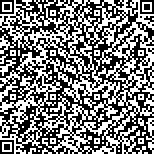王帅,刘佳琳,那里,等.超短波治疗对脊髓损伤炎症因子和丝裂原活化蛋白激酶通路的影响[J].中华物理医学与康复杂志,2023,45(1):6-11
扫码阅读全文

|
| 超短波治疗对脊髓损伤炎症因子和丝裂原活化蛋白激酶通路的影响 |
|
| |
| DOI:10.3760/cma.j.issn.0254-1424.2023.01.002 |
| 中文关键词: 脊髓损伤 超短波 丝裂原活化蛋白激酶通路 炎症因子 |
| 英文关键词: Spinal cord injury Ultrashortwave therapy MAPK Inflammatory factors |
| 基金项目:国家自然科学青年基金项目(81101462);辽宁省自然科学基金项目(201602875);辽宁省公益科学基金项目(2016003001);中国医科大学校培育学科建设经费资助项目(112-3110119071) |
|
| 摘要点击次数: 4356 |
| 全文下载次数: 4547 |
| 中文摘要: |
| 目的 观察超短波治疗对脊髓损伤(SCI)后炎症因子和丝裂原活化蛋白激酶(MAPK)通路的影响。 方法 将79只Sprague-Dawley(SD)大鼠随机分成对照组(n=35)、干预组(n=35)和假手术组(n=9)。采用Allen′s法对干预组和对照组大鼠行SCI挫压伤造模,假手术组仅暴露脊髓组织,不进行打击。SCI后24 h后,干预组给予无热量超短波治疗,每日1次,每周5次,每次7 min直至取材前。造模成功1 d后和各组对应的取材时间点(提前1 h),采用SCI行为学评分(BBB)对3组未取材的大鼠进行运动功能评估。造模成功1 d、3 d、7 d后,采用免疫荧光和免疫印迹技术观察3组大鼠损伤区域内炎症因子和MAPK通路的动态变化。 结果 造模成功14 d后,干预组大鼠的BBB评分为(7.30±1.04)分,显著优于对照组造模成功14 d后,差异有统计学意义(P<0.05)。造模成功7 d后,假手术组大鼠脊髓组织炎症因子NOD样受体热蛋白结构域相关蛋白(NLRP3),白介素-6(IL-6),白介素-6受体(IL-6R)和肿瘤坏死因子-α(TNF-α)的含量均显著低于对照组和干预组,差异均有统计学意义(P<0.05);干预组大鼠脊髓组织炎症因子NLRP3、IL-6、IL-6R和TNF-α的含量亦显著低于对照组,差异均有统计学意义(P<0.05)。造模成功7 d后,干预组大鼠损伤区域内锌指蛋白36(TTP)的阳性细胞数量显著高于对照组,差异有统计学差异(P<0.01)。造模成功7 d后,对照组和干预组大鼠损伤区域MAPK通路核心蛋白丝裂原活化蛋白激酶2(MK2)、磷酸化抗体(p-MK2)和TTP蛋白均显著高于假手术组,差异均有统计学意义(P<0.05)。造模成功7 d后,干预组大鼠损伤区域MAPK通路核心蛋白MK2、p-MK2和TTP蛋白与对照组比较,差异均有统计学意义(P<0.05)。 结论 超短波治疗可通过调节MAPK炎症通路来抑制炎症因子的产生,从而促进SCI大鼠运动功能的恢复。 |
| 英文摘要: |
| Objective To observe any effect of ultrashortwave (USW) therapy on inflammatory cytokines and the MAPK pathway of rats with a spinal cord injury. Methods Seventy-nine Sprague-Dawley rats were randomly divided into a control group (n=35), an intervention group (n=35) and a sham group (n=9). Allen′s method was used to establish a contusion model of SCI in the rats of the control and intervention groups, while the sham group′s spinal tissues were exposed but not stricken. Beginning twenty-four hours after SCI modeling, the intervention group was given 7min of USW therapy daily, five days a week till the day of sacrifice for sampling the target area of spinal cord for tests. Then, motion function was evaluated using Basso, Beattie and Bresnahan (BBB) scoring. One, three and seven days after the SCI modeling, immunofluorescence and western blotting were employed to observe any changes in inflammatory factors and the MAPK pathway in the lesioned area. Results Fourteen days after the modeling the average BBB score of the intervention group was significantly higher than the control group′s average. Moreover, 7 days after the modeling the average content of the domains containing protein 3 (NLRP3), interleukin-6 (IL-6), IL-6 receptor and tumor necrosis factor-α (TNF-α) in the target area of the spinal cord of sham group showed significantly lower levels than in the other 2 groups. And the levels in the intervention group were significantly lower than in the control group. Seven days after the modeling the number of cells positive for zinc finger protein 36 (TTP) in the lesioned area of the intervention group was significantly greater than among the control group. At the same time the levels of MAPK-activated protein kinase 2 (MK2), phosphorylated-mitogen-activated protein kinase-activated version (p-MK2) and TTP in the control and intervention groups were significantly higher than in the sham group. And there were significant differences between the intervention group and control group in the levels of MK2, p-MK2 and TTP. Conclusion Ultrashortwave therapy can inhibit inflammation by regulating the MAPK inflammatory pathway, promoting the recovery of motion functions, at least in rats. |
|
查看全文
查看/发表评论 下载PDF阅读器 |
| 关闭 |
|
|
|